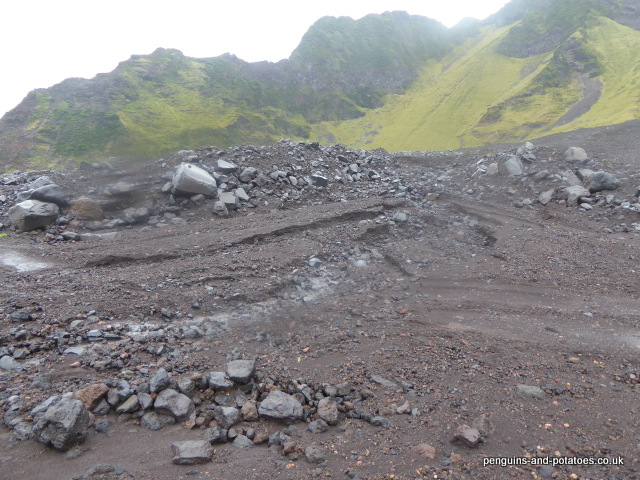In the early days of January this year, we had a visit from the RMS St. Helena. This vessel also visited Tristan in April 2016. In both cases the itinerary was Cape Town to Tristan da Cunha to St. Helena, and the Royal Mail Ship has made the journey many times in the past. The 2016 visit was supposed to be the last such journey, on account of the new airport on St. Helena making the vessel redundant. However, the well recorded problems with the airport resulted in the ship making another last voyage this year.
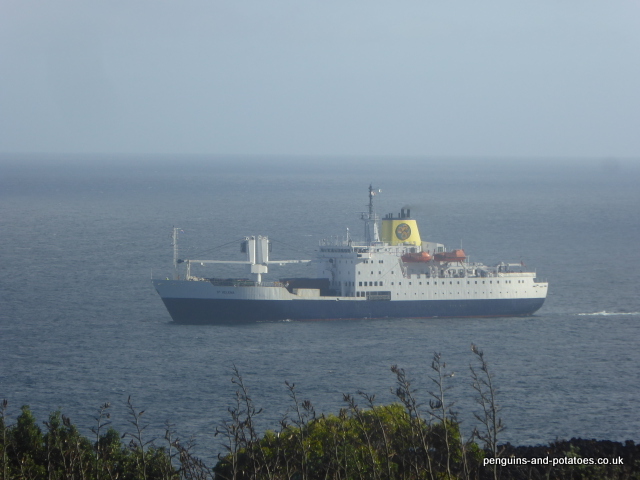
On both the 2016 voyage and the 2018 voyage, there was one particular passenger. In 2016, Lisa Phillips was able to set foot on Tristan for only a couple of hours, her time being limited because of weather conditions. At that time she was Governor Designate, on her way to be sworn in as Governor of the British Overseas Territory known as ‘St. Helena, Ascension and Tristan da Cunha’. This year she arrived on Tristan as Governor.
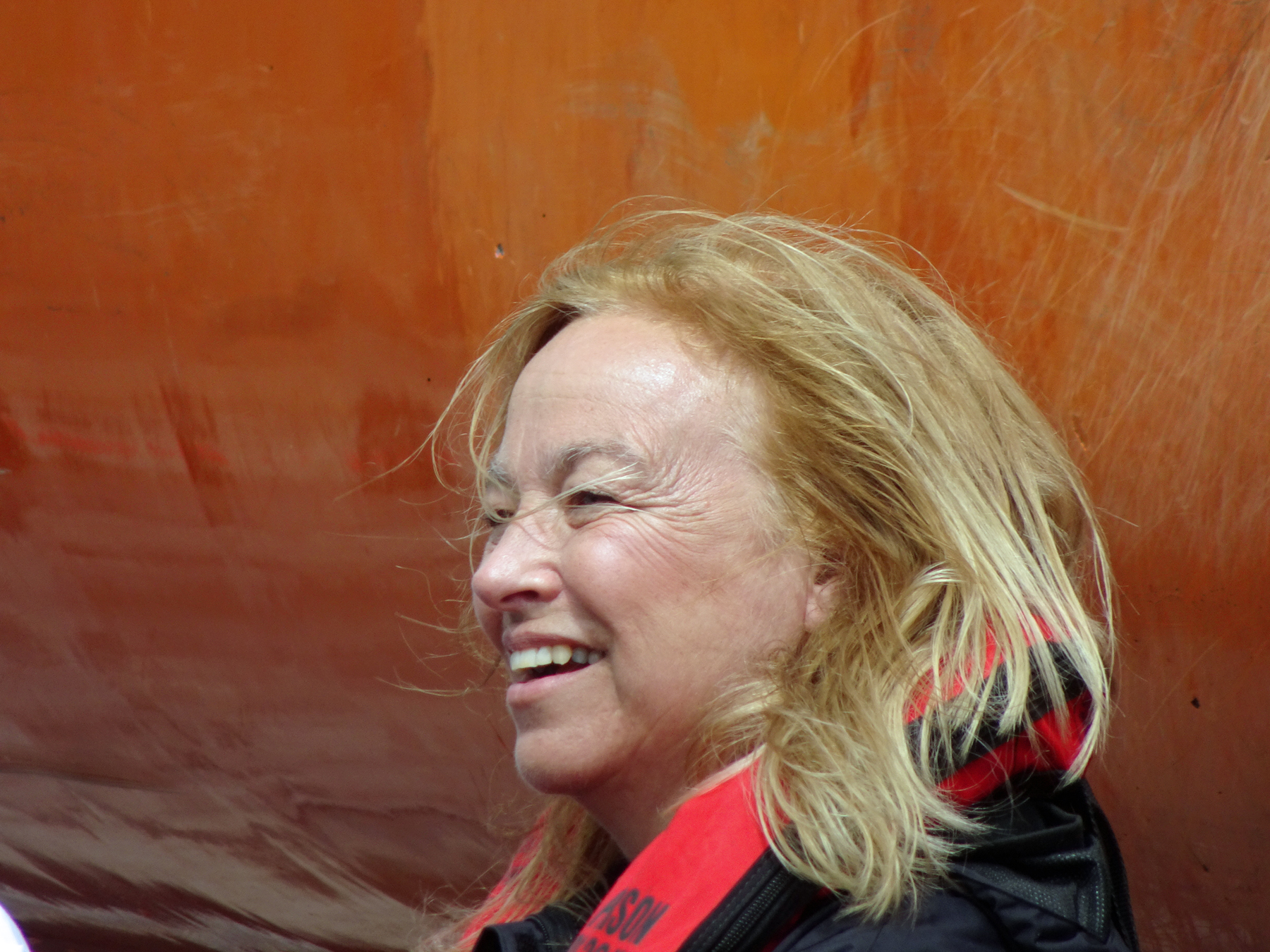
Ever since 1659, there has been a British Governor on St. Helena. To start with, and until 1834, the Governor was appointed by the East India Company, but since then the appointment has been made by the British Crown. Today, the Governor is appointed by the British monarch on the advice of Her Majesty’s Government. Meanwhile, on Tristan da Cunha, from the time of the settlement of the island in 1812 governance was carried out by the people of Tristan themselves, with the unofficial role of governor being taken by visiting clergy men who often stayed on Tristan for a number of years. This prevailed on Tristan until 1950, when for the first time an Administrator was appointed who worked under the direction of the Governor on St. Helena. This level of delegation is essential when you consider that 1350 miles of ocean separates St. Helena from Tristan, and in another direction Ascension Island is 1295 miles away from St. Helena.
The British Overseas Territories consist of 14 separate colonies, including Gibraltar, the Pitcairn Islands, The British Pacific Islands, and the Falkland Islands. Each of them has a Governor, who is the de facto Head of State.
Lisa Phillips is the 68th Governor of St. Helena, and the first female in that position.
It is with that background that the people of Tristan were looking forward to the forthcoming visit of their Governor. Preparations were made for a full 3-day 2-night visit, with a business and social programme that included a meeting with the Island Council and visits to all the places of importance, including the school, the new hospital, the old thatched house and the 1961 volcano, and with a number of receptions, lunches, a community dance, and so on.
On the island of Tristan da Cunha, no planning can be set in stone thanks to the uncertainties of the weather and the precariousness of the harbour, and as the planned arrival day approached and the weather forecast looked poor, some contingency programmes were arranged. The ship arrived on the 3rd, as planned, but it was not possible to get passengers off. The following day, the weather and sea state had improved but it was still marginal to be able to get passengers off the ship. The decision was made that the only people who would be allowed to come ashore would be the people stopping on the island, and the Governor. Around 150 passengers had to stay on the ship, in case worsening sea conditions prevented them getting back on board. So, in effect the Governor’s visit started around 10.00 in the morning, and her programme on that first day had to be severely modified and flexible – sea conditions were constantly monitored to make sure that she could get back on the ship and not be abandoned on Tristan!
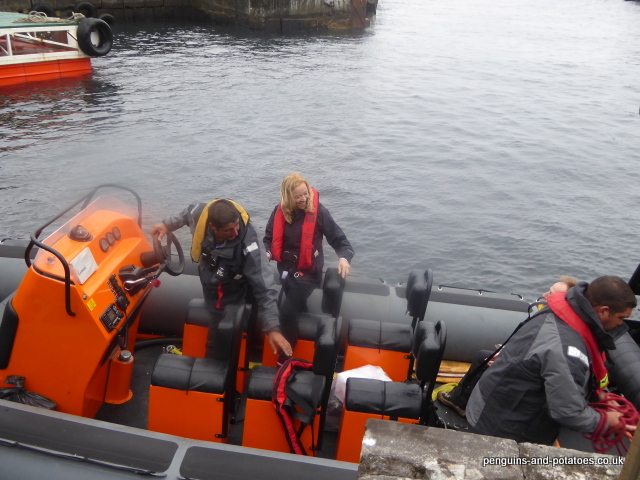
The Governor presided over a meeting with the Island Council, and she visited the school and Aunt Ellen, at 99 the oldest islander. In the afternoon, we were able to take her out west, to view all the damage from the land slips and particularly to view the damage to all the Patches at Red Body Hill. We also discussed many of the issues to do with the cattle and the overgrazing. During this part of the visit we had a radio message – the Governor had to be at the harbour by 4.00 pm, so we cut short her visit to the farming areas and delivered her quickly to the new hospital for her final visit of the day.
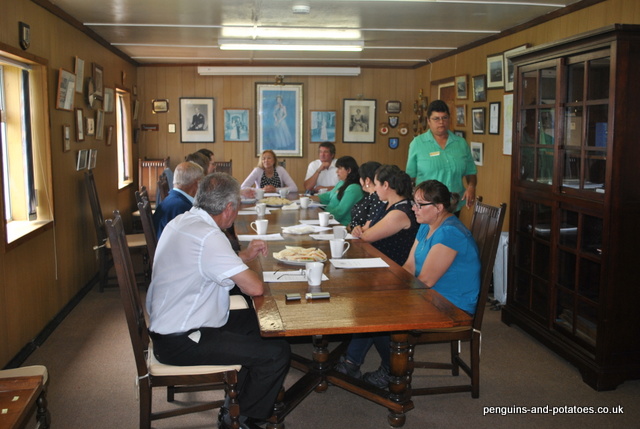
The following day there was no possibility of anyone landing at the harbour, and the ship stayed in the lee of nearby Nightingale Island to see if conditions would improve. Meanwhile, the captain of the RMS was in contact with the operators of the vessel to see if the ship’s schedule could be modified the following day, to allow for a much later departure than had originally been planned.
The weather and sea conditions did improve, and the following day the Governor made it ashore again, as did the majority of passengers that were on the ship. This was a chance for the Governor to catch up on some of the duties that had been cut from her programme two days earlier. It was also a chance for many of the people from St. Helena (“Saints” as they are called) to renew old friendships on Tristan – the social links between the two islands are well established, and go well beyond matters of governance.
There is no doubt that the visit from the Governor was of great importance, partly because of the way in which this facilitated and enhanced numerous areas of understanding. This is reflected in the following statement that Lisa Phillips sent me for this article:-
“I was concerned to see some of the damage done following recent landslips and floods. I deeply appreciate the way the community dealt with this demonstrating their usual pragmatism and dedication. It is greatly to their credit that the road was made passable and that the potato patches were salvaged as much as they could be. I was also interested to hear about the plans to improve pasture and reduce cattle going forward. These are difficult but necessary decisions but I was glad to hear that there was commitment to protect resources for future generations. I was struck by the way the Tristan da Cunha community comes together to consider what is best going into the future in the areas of agriculture, livestock, livelihoods etc. As Governor of Tristan da Cunha I am committed to supporting decision making on island”
